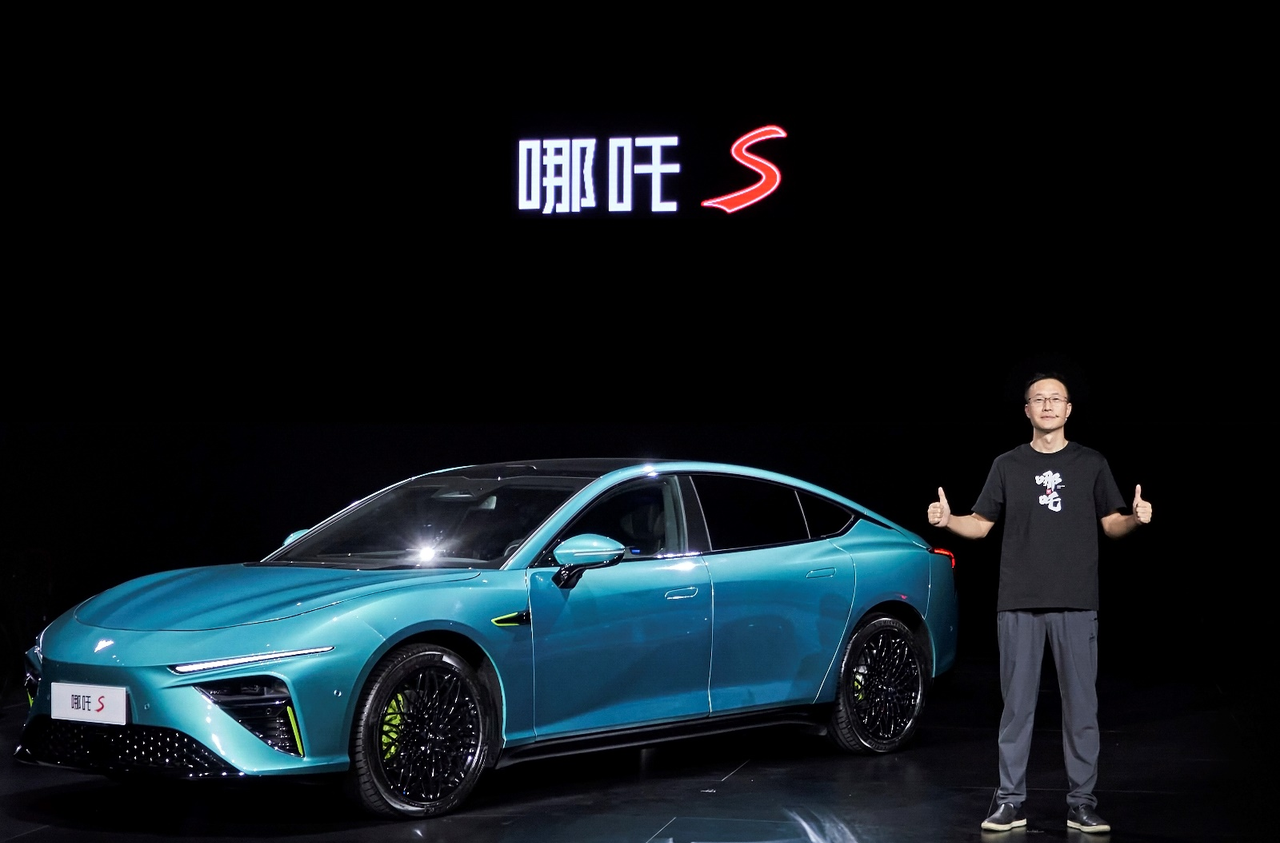New Energy B-Segment Car Market
Another new option has been added to the New Energy B-segment car market.
On July 31st, the first model developed on the Shanhai platform by NETA, NETA S, was officially launched. It comes in two versions: a pure electric version and an extended-range electric version, which include the following editions:
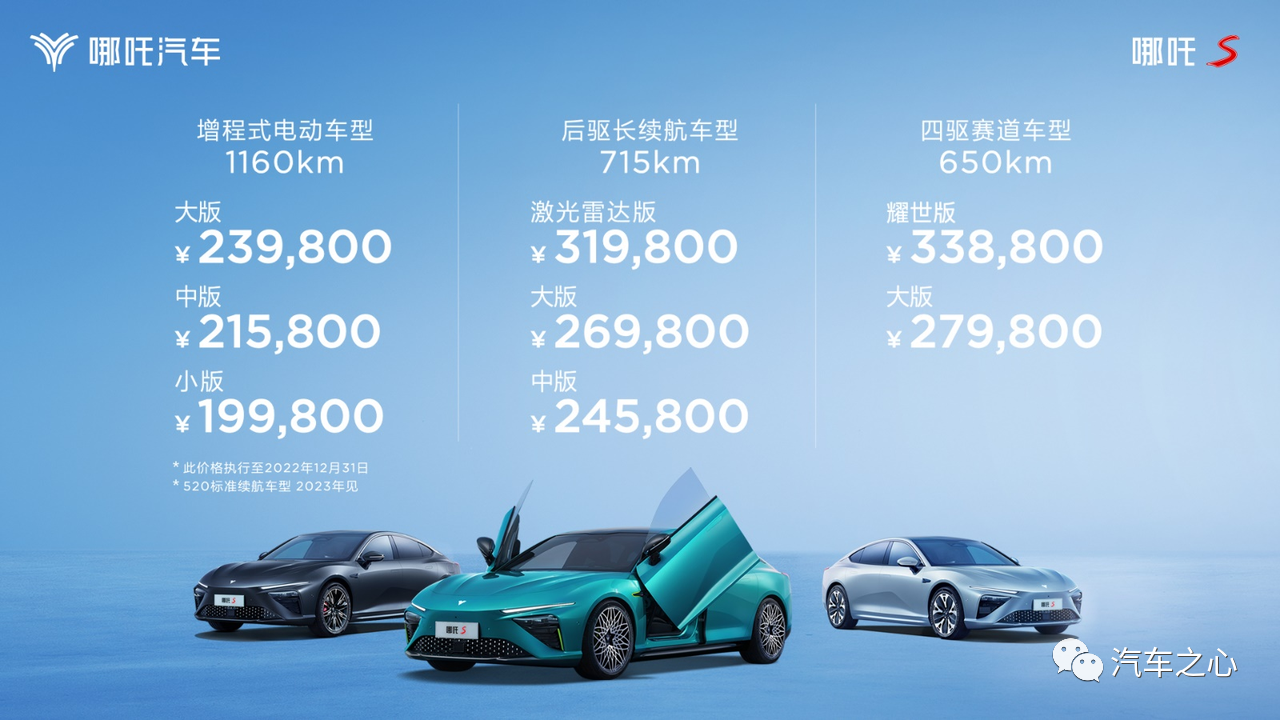
- Pure electric version: Medium, Large, LIDAR, 650 Four-wheel drive large, and Shining edition
- Extended-range electric version: Small, Medium, and Large
The price of the NETA S is between CNY 199,800 and CNY 338,800.
In July this year, NETA sold 14,037 vehicles, a YoY increase of 133.5%, surpassing NIO, Li Auto, and Xpeng.
From January to July 2022, NETA delivered a total of 77,168 new cars, ranking second among new energy vehicle companies, thanks to NETA V and NETA U.
Since last year, NETA’s sales volume has repeatedly surpassed that of the top three new carmakers and remained among the top ones.
With NETA U and NETA V, NETA Cars have successfully entered the “countryside” market.
The NETA S launched this time is considered to be an attempt by the NETA brand to enter the urban market.
Survival Rule for the New Energy B-Segment Car Market: Entry-level is Top Configuration
The New Energy Car market for cars priced between CNY 150,000-300,000 is extremely active.
Not long ago, two new cars were launched, Changan Shenlan SL03 and BYD Hai Bao, both of which are competitors of the NETA S.
Changan Shenlan SL03 has a pure electric version, an extended-range electric version, and a hydrogen-electric version, and is priced between CNY 168,900 and CNY 699,900. It is known as the “first rear-wheel drive car for young people” and has the value of entering the high-end market, yet it is also a “bargain”. The order volume exceeded 10,000 vehicles in half an hour after the launch conference.
BYD Hai Bao is priced between CNY 209,800 and CNY 286,800. Its biggest highlight is the “CTB Battery Body Integrated Technology”. All models are equipped with lithium iron phosphate blade batteries to improve power battery efficiency and safety. Its presale orders exceeded 20,000 within six hours, and now orders have exceeded 60,000.
There is also the Zero Run C01, which is expected to be launched officially in the second half of this year. Over 20,000 pre-order sales were made within four hours.
Recently, XPeng P7 has shown a downward trend in sales, rumored to be due to people waiting for the upgraded version.
Related data also proves the potential of the New Energy B-Segment Car Market to challenge monthly sales volumes of over 10,000 or even 20,000 units.From January to June 2022, the sales volume of domestic new energy B-segment cars increased by 93.8% YoY, with plug-in hybrid sales growing at a 286% YoY rate.
In this segment, the competing model of NETA S, XPeng P7, sold more than 35,000 units in the first half of the year, while BYD Han achieved monthly sales exceeding 25,000 units in June this year.
What are the killer features of the newly launched NETA S? Let’s take a look at the parameters:
NETA S has a size of 4980mm × 1980mm × 1480mm and a wheelbase of 2980mm, reaching the level of a B + segment car. Its aerodynamic drag coefficient is as low as 0.216, the lowest among cars of the same category.
Currently, NETA S comes in pure electric and extended-range versions:
- Pure electric four-wheel-drive CLTC with a range of 650km;
- Long-range pure electric CLTC with a range of 715km;
- Standard-range CLTC with a range of 520km;
- Extended-range version with a comprehensive range of 1160km and NEDC pure electric range of 310km.
To address the pain points of electric vehicle users in winter, NETA equipped its vehicles with the HozonEPT4.0 battery thermal management system, which can operate normally even in a minus 18℃ environment. This system increases winter cruising range by 20% compared to the previous generation system, and also improves winter charging speed by more than 20%.
Beyond meeting the needs of most operating scenarios for pure electric products, NETA also provides an extended-range option for users who still have range anxiety or inconvenient charging conditions.
The extended-range electric drive system of the NETA S is equipped with a 1.5-liter four-cylinder high-performance range extender, a 43.5kWh large-capacity battery pack, and the same 170kW rear-drive motor as the pure electric version. The total CLTC cruising range is 1160km, and the pure electric cruising range is 310km.
The 310km pure electric cruising range is the longest among all extended-range models currently available on the market, while the extended-range brings longer cruising range, which partly solves the users’ range anxiety.
This cruising capability can meet 90% of the daily operating intensity for NETA S users, requiring only one or two charges a week.
Apart from “Making Cars for the People”, “Equal Access to Technology” has always been a principle that NIO Automobile adheres to. The goal is to enable the general public to enjoy the intelligent driving experience brought by cutting-edge technology at the price of mainstream models.
At the launch conference of the NIO S, Zhang Yong said, “We don’t want users to spend extra money on optional equipment or subscriptions. These are all standard on the NIO S. We want to be more sincere and less gimmicky. The NIO S is the best version from the moment you start!”
On the NIO S, we can see how NIO Automobile has adhered to and implemented this philosophy.
The NIO S is the first model equipped with NIO Automobile’s self-developed NETA SPACE intelligent cockpit system.
The NETA SPACE intelligent cockpit system is equipped with the mainstream Qualcomm 8155 chip and BlackBerry QNX real-time operating system, which not only operates smoothly but also has better response time and reliability.
In terms of comfort, the NIO S provides 12-way electric adjustment for the driver’s seat in the front row, 8-way electric adjustment for the co-driver’s seat, and is equipped with an electric leg rest, as well as heating, massage, ventilation and other functions.
The NIO S supports “Four-screen interconnection”, including a 17.6-inch central control screen, a 12.3-inch co-pilot audio and video screen, a 13.3-inch hidden instrument panel, and an AR-HUD head-up display.
Two impressive features are worth mentioning:
One is the 17.6-inch ultra-large central control screen, which has a high resolution of 2.5K and a 90% ultra-high screen-to-body ratio. The aluminum-magnesium alloy shell also makes the screen look more textured.
The other is AR-HUD. The head-up display shows necessary information such as instrument information, AR navigation, and safety-assisted driving on the road ahead of the driver, and is integrated with road scene display navigation and ADAS warning information to provide an immersive driving experience with a strong sense of the future.
In terms of intelligent driving, NIO’s self-developed NETA PILOT uses two different perception systems, distinguished by 3.0 and 4.0.
The NIO S is equipped with NETA PILOT 3.0 as standard, which has 28 perception hardware and supports L2+ assisted driving on ordinary roads:
- 11 cameras (4 panoramic + 5 surrounding + 2 front-facing)
- 5 millimeter-wave radars
- 12 ultrasonic sensors
- Perception units such as high-precision positioning units and high-precision maps- Equipped with dual TDA4 from Texas Instruments, with a computing power of 16 TOPS.
NETA PILOT4.0 is equipped on the rear-wheel-drive long-range (LiDAR version) model, which can achieve more advanced assisted driving functions.
-
Dual LiDAR;
-
11 cameras (2 front cameras with 8 million pixels each + 4 surround view cameras + 5 peripheral view cameras)
-
5 mmWave radars;
-
12 ultrasonic sensors;
-
Perception units including high-precision positioning unit and high-precision map;
-
Equipped with Huawei MDC 610, with a computing power of 200 TOPS.
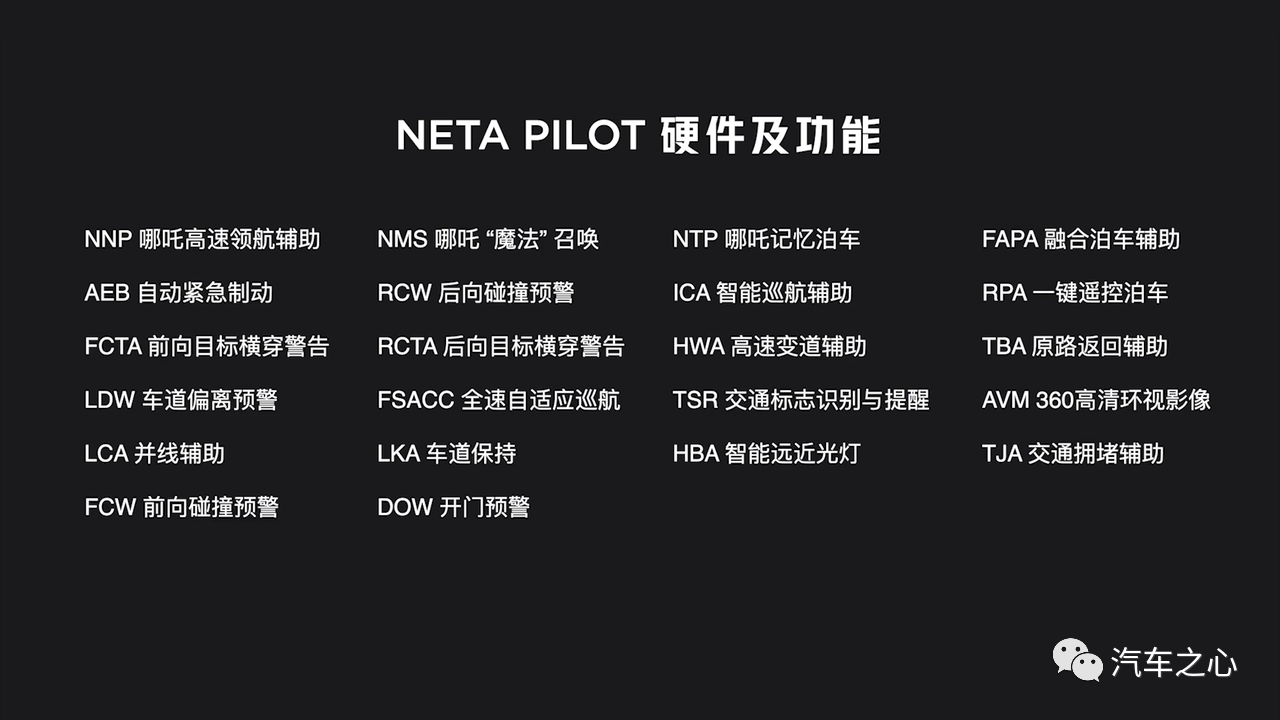
Zhang Yong stated at the press conference that “technology equality” and “entry-level is top-of-the-line”. Users can enjoy the NETA PILOT 3.0 standard equipment without paying any additional fees, which includes 19 intelligent driving assistance functions.
The most technically demanding functions, NNP high-speed navigation assistance, memory parking and NMS “magic” summon, will be implemented in the first half of 2023.
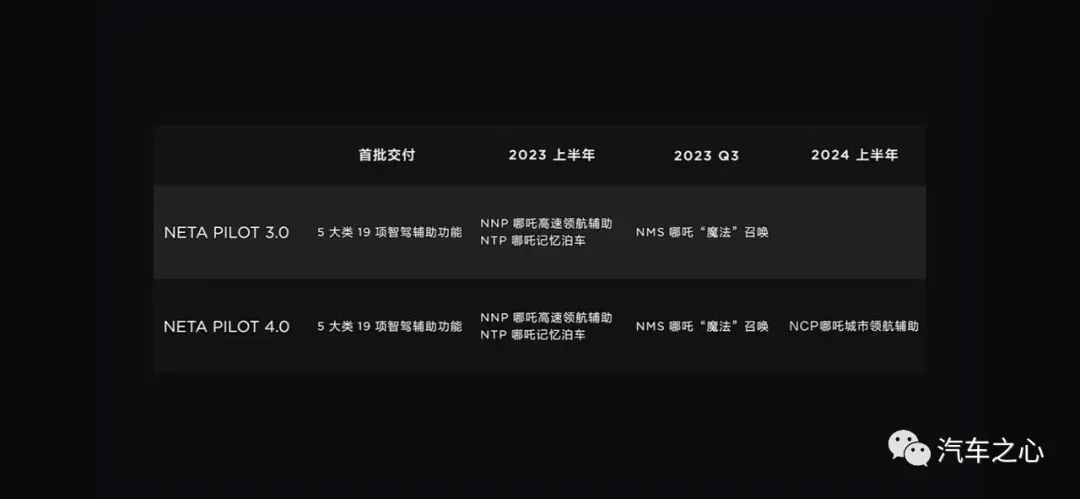
The difference between NETA PILOT4.0 and NETA PILOT 3.0 is that in addition to the addition of 2 LiDARs and a powerful platform, NCP (urban automatic navigation assisted driving) function is also added. However, this function will not be updated until the first half of 2024.
Earlier this month, NIO and Desay SV reached a comprehensive strategic cooperation. The two parties will cooperate in the fields of intelligent cockpit, intelligent driving, body, software, and services. The NIO S is the first mass-produced model of the two parties’ cooperation.
Zhang Yong once said: “Through the NIO S, completely change everyone’s impression of NIO cars’ technology and make everyone think NIO is a company with technology.”
Combined with NIO’s self-developed perception and regulation algorithms, NIO S hopes to maintain the industry’s top-tier intelligent driving functions in the next 3 to 5 years.
“My fate is up to me, not God”, how long can NIO shout?
When NIO first appeared, it was in the third and fourth tiers of new car makers.
By 2020, NIO’s sales volume was not large, with only 15,091 vehicles sold throughout the year.
Until 2021, NIO’s sales volume began to soar. By the end of September 2021, it had delivered a total of 67,730 vehicles, setting a record for delivery for 8 consecutive months and smoothly squeezing into the first tier of new car makers’ sales volume.
The small transparent company has demonstrated a dark horse stance, advancing all the way, perhaps because it chose a completely different path from that of companies like XPeng’s He XPeng.## Zhang Yong Brings North New Energy’s Tech to NETA, and Takes a Different Approach
As former vice president of North New Energy, Zhang Yong witnessed its peak in the B2B market, but also its decline due to lack of C-end customers. Therefore, this time he chose to first establish a foothold in the B-end and then cater to C-end users.
Through setting up B-end and G-end sales channels in third and fourth-tier cities, along with automotive market expansion, corporate partnerships, and other strategies, NETA skillfully avoided competing with other new forces in the market. By leveraging B-end marketing, NETA gradually transitioned towards the C-end.
Public data shows that in the first eleven months of 2021, NETA’s C-end private customers accounted for more than 91%, while in terms of sales markets, NETA had a sales volume of 44% in first and new first-tier cities, and 56% in second and below-tier cities.
Zhang Yong once emphasized that differentiation and focus are the themes for NETA’s future development. Unlike Wei Xiaoli’s high-end positioning approach, NETA chose a bottom-up approach, which is Zhang Yong’s practical application of a differentiated competitive strategy for the NETA brand.
He once said that if NETA had taken the same high-end approach as Wei Xiaoli at the beginning, it would not have survived. “Everyone wants to move from high-end to low-end, but NETA doesn’t have the conditions to do so, time and money don’t allow it, so I definitely chose to start from low-end and then go high.”
When targeting C-end users, they directly positioned their products at or below 200,000 yuan, focusing on third and fourth-tier markets. “First, build scale, let the people recognize your product and brand, I think that’s the most important,” said Zhang Yong.
NETA N01 and NETA V, with an average price of around 100,000 yuan, have no competitors among electric vehicles in the same price range. NETA U, with an average price of around 150,000 yuan, has raised the brand’s competitive threshold, while also covering a wider range of sub-200,000 yuan markets. The sales volume is sufficient to prove that consumers are buying into the idea.
However, despite the high sales figures, the meager profits of the mid- to low-end models are unable to cover the huge losses. According to a recent financial report from Huizhong Auto Group, NETA’s revenue in the first half of 2021 was 1.632 billion yuan, with a net loss of 693 million yuan.
Huge sales volumes cannot support NETA’s desire for “small profits but quick turnover,” and NETA has also found that as the “mid to low-end” label becomes deeper, it becomes increasingly difficult for the brand to transform upwards. NETA’s emphasis on “technological equity” is actually another way of saying “cost-effective” car manufacturing.
In addition to enhancing research and development efforts to create better products, NETA currently faces many challenges in terms of technology research and development, brand image, user groups, and competition from many other strong competitors. Can NETA continue to rise and achieve success in the “urban” market, or will it fall short?Different from NETA V and NETA U, NETA S enters a completely new segmented market. For NETA Automobile, whether NETA S can bring its product and brand value to a higher value range is both a new beginning and a new challenge.
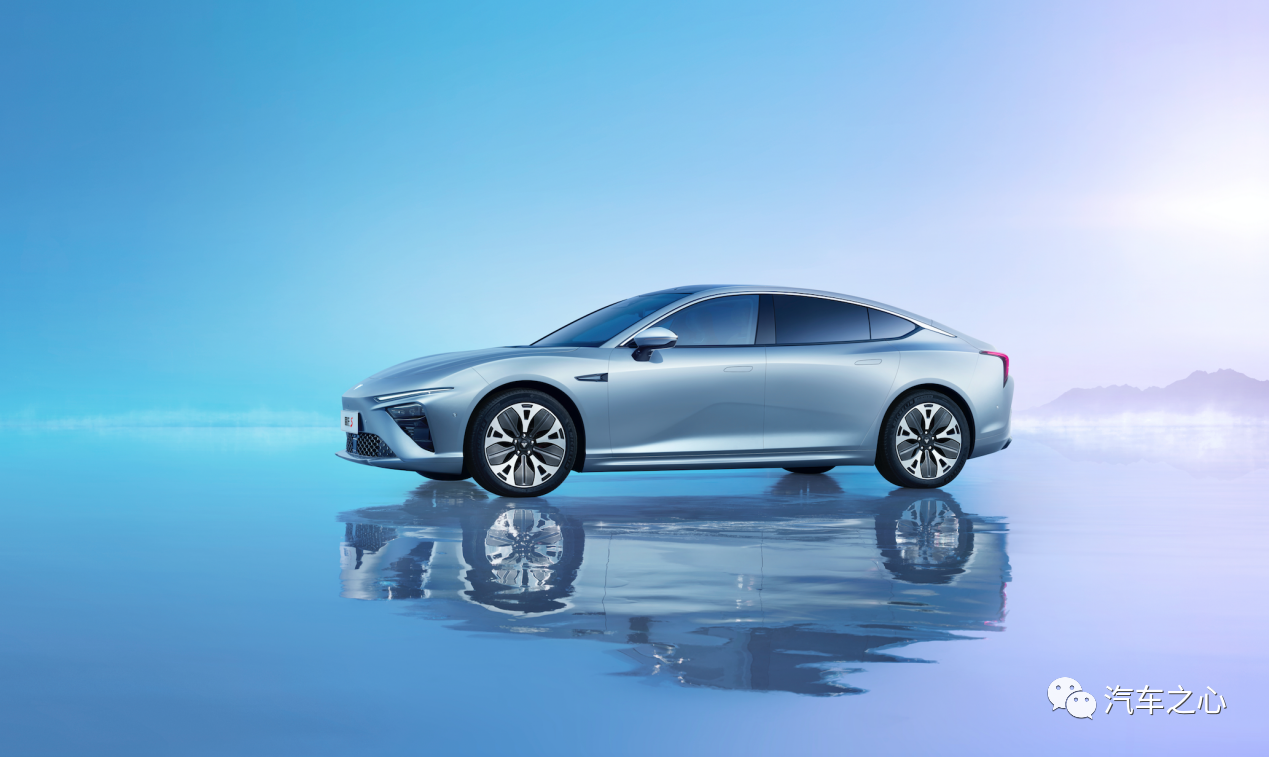
“Selling more than 20,000 units per month is the benchmark for excellence”
If NETA wants to move up, it is similar to the situation of fuel car brands that had to start from the bottom up in the past.
However, this road is exceptionally difficult to walk. Brand positioning, core technology, and user recognition are all indispensable. As a result, when domestic brands attempted to break into the high-end market during the era of fuel cars, the results were unsatisfactory.
So, let’s change our thinking. NETA follows the principle of establishing a high-end brand and tries to move upward.
First, find the right users, define the target audience, and establish the brand identity.
According to statistical data provided by NETA Automobile, in 2021, users from first-tier, new first-tier, and second-tier cities accounted for about 64% of NETA Automobile’s total users.
Starting from NETA N01 and NETA V, the users from third-tier and fourth-tier cities accumulate, and NETA S is expected to shift to first-tier and second-tier cities.
Zhang Yong once said, “Because the price of NETA S is between 200,000 and 300,000 yuan, if we can achieve a monthly sales volume of 10,000 units at this price, the goal of “entering the city” will be achieved.”
Subsequently, when NETA S’s pre-sales orders exceeded 5,000 units in June this year, he published a Weibo post saying that “selling more than 10,000 units per month is passing, and selling more than 20,000 units per month is the benchmark for excellence.”
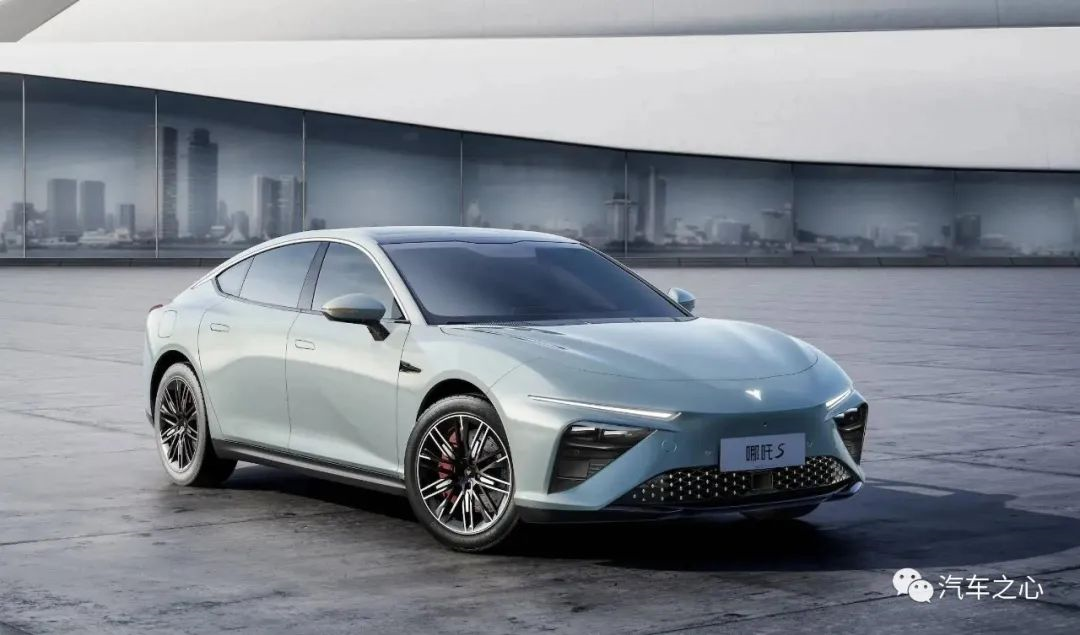
Whether consumers will pay for NETA S is the key to NETA’s brand building this year.
As a brand that started in third-tier and fourth-tier cities, the “cost-effective” label brought by its price advantage cannot bring additional brand value to NETA.
When people buy a high-end car, they are not only buying a car but also a “lifestyle” behind the brand label.
“Affordability” and “cost-effectiveness” are not impressions that high-end brands convey to people. For example, Xiaomi has always been known for its cost-effectiveness and has yet to achieve a high-end brand image.
Secondly, emphasize product strength.
Some people commented that the corresponding competitor of NETA S is XPeng P7 because XPeng has pulled up the brand tone with P7.
XPeng has always used “black technology” assisted driving as a brand anchor point and has consistently been the top-selling new energy car in China.
This might be an inspiration for NETA: to realize brand upgrading by taking a technical route, which is the best choice for new energy car brands without the backing of a powerful traditional automaker.Backed by two huge capital and traffic IPs, NIO and 360, NIO’s upward momentum has gained further momentum.
However, at present, cooperation with upstream and downstream companies cannot solve the short board of NIO’s technological innovation. Only by breaking through the road of independent research and development can NIO achieve technological advancement.
Zhang Yong also stated: “NIO will adjust its original intelligent technology follow-up strategy to a strategy of partial leadership to see if it can achieve leadership in the entire industry.”
The breakthrough of independently developed technology is accompanied by continuous investment. It is reported that XPeng Motors invested as much as 5.382 billion yuan in research and development costs from 2018 to the first quarter of 2021 alone during the development of NGP advanced level assisted driving.
“NIO still hopes to make a popular product. In the future, we will polish the technology, continue to reduce costs, so that it can be popularized in all models, and achieve a leading advantage in user service and product performance.” said Zhang Yong.
The cost of batteries for intelligent cars is still high, and users’ demand for car intelligence is constantly rising. In this context, balancing technology development costs and user experience is the key and difficult point to be overcome in the process of technological advancement.
Whether consumers will buy into NIO’s “urbanization” strategy remains to be seen, and the sales volume of NIO S will be the testimony.
This article is a translation by ChatGPT of a Chinese report from 42HOW. If you have any questions about it, please email bd@42how.com.
